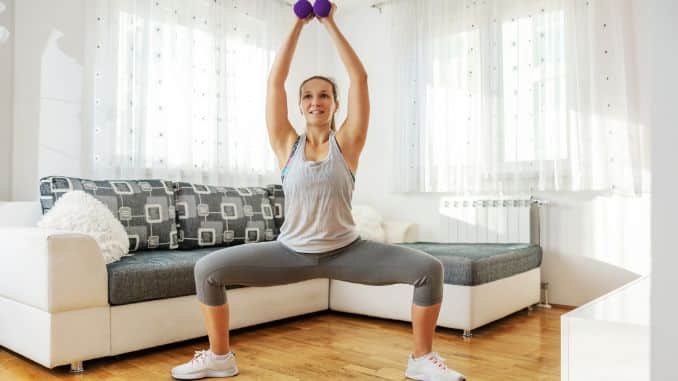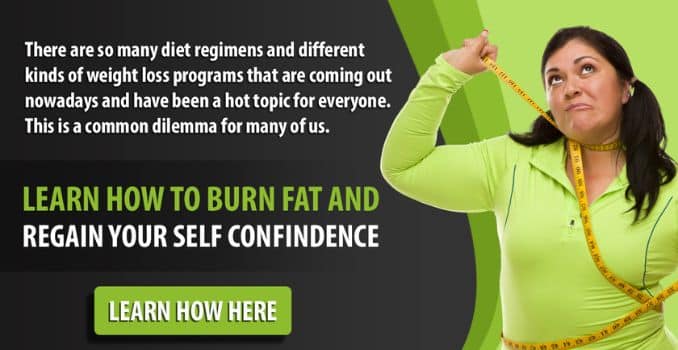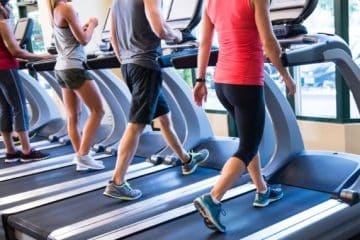Efficient Full Body Workouts for Home Fitness
Full-body workouts should not be a chore. It should be something that you look forward to doing every day. It should be something that you get excited about. Exercise is a great way to get your body moving and energized to help your overall mental health. Varying your exercises with a full-body workout routine can keep your muscles challenged. Working out has numerous benefits for mental and physical health. You can achieve simple body full-body workouts at home without fancy equipment. This article explores six simple full-body workouts to help you reach your fitness goals. Simple full-body workouts benefit weight loss, muscle tone, and overall fitness.
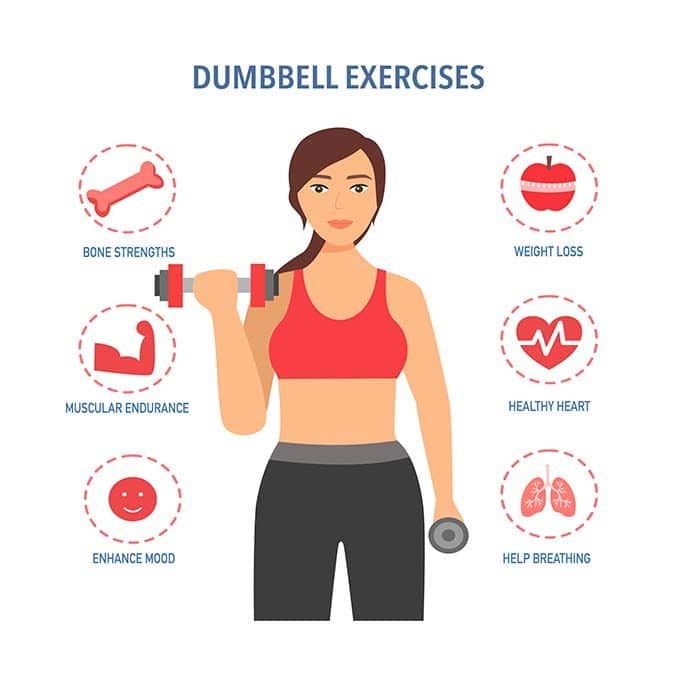
Importance of a full body workout routine
In physical activity, even a few exercises are essential for everyone as it has countless benefits to the mind, feelings, and our major muscle groups.
But this is more crucial for older people because they are more prone to illnesses due to aging. It helps maintain their overall health and quality of life. Regular exercise can improve strength, balance, and flexibility, reducing the risk of falls and other injuries. So, don't let age hold you back – get moving and enjoy the benefits of an active lifestyle!
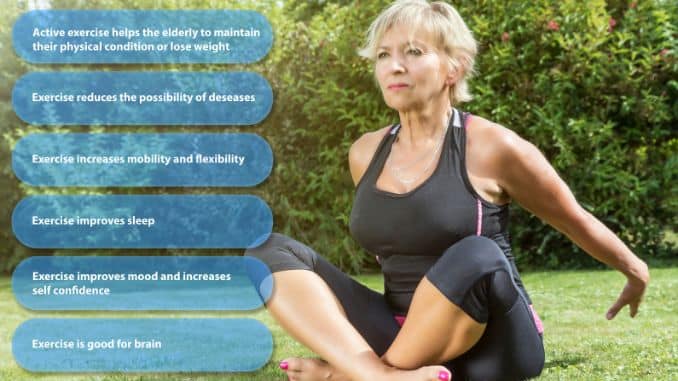
Overall, simple full-body workouts offer a convenient, flexible, and cost-effective way to achieve and maintain a healthy, fit body.
6 Simple Full-Body Workouts You Can Do at Home
The routine includes warm-ups and cool-down exercises to maximize the benefits of these simple full-body workouts.
Warm-Ups
1. Shoulder Rolls
Begin in an upright standing position with your feet shoulder-width apart, maintaining good alignment with your head, shoulders, hips, and legs. Place your hands on your side. Engage your core. Shift your shoulders upward, then roll them up and back until you feel resistance in your shoulder blades. Relax and repeat the movement in the opposite direction—complete ten repetitions.
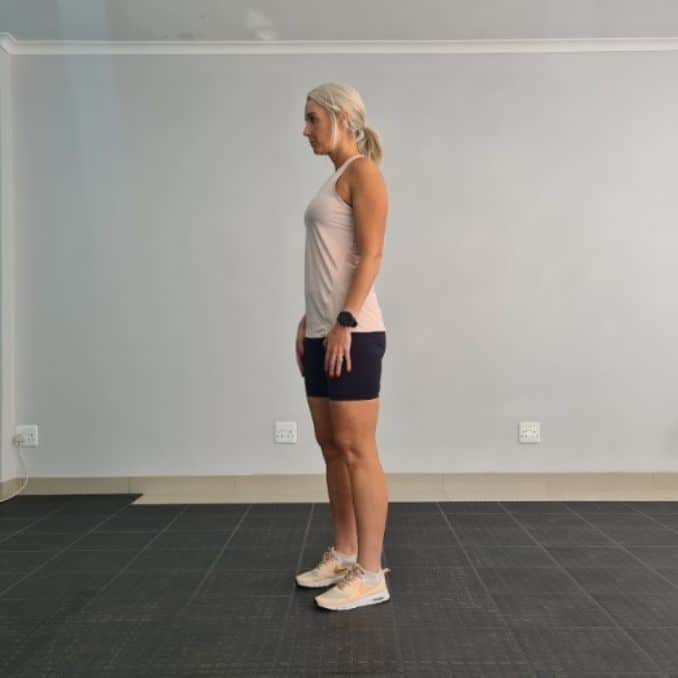 |
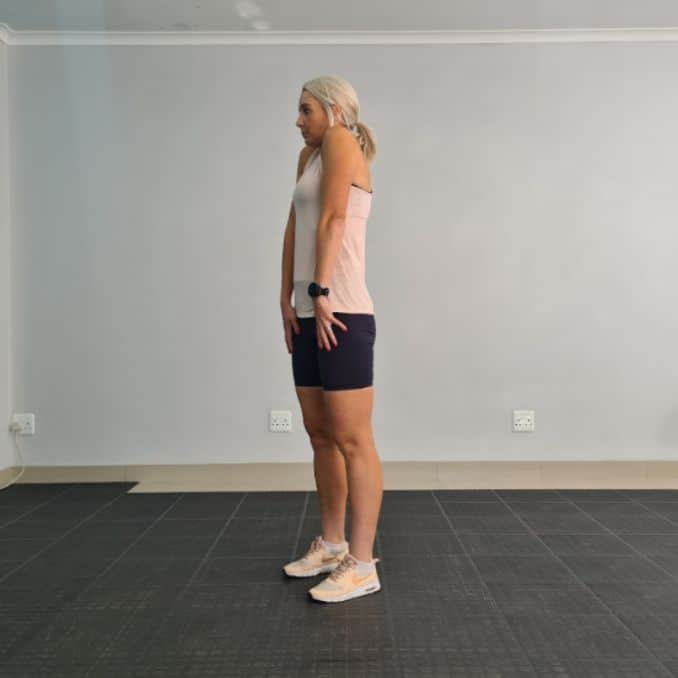 |
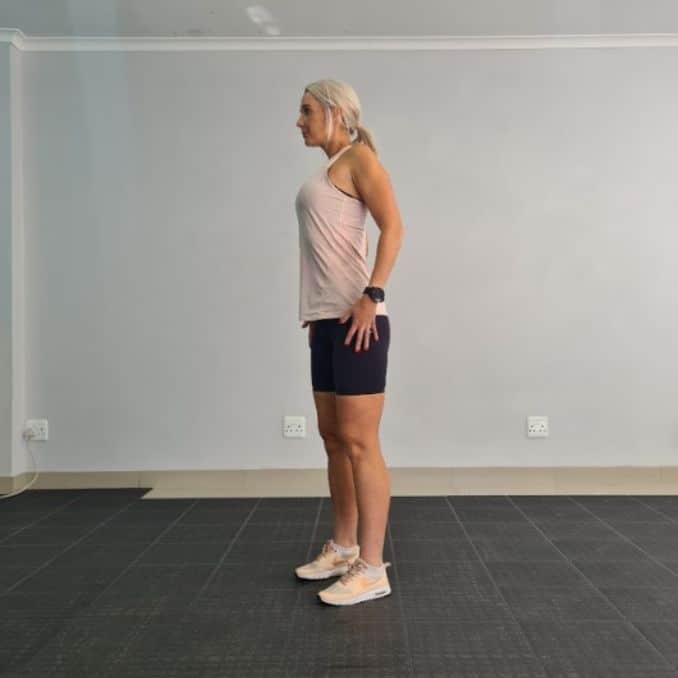 |
Shoulder Rolls
2. Standing Twist
Begin in an upright standing position with your feet shoulder-width apart, maintaining good alignment with your head, shoulders, hips, and legs. Straighten your arms out and clasp your hands together at chest height. Engage your core and twist your upper body to one side, keeping your hips locked forward as you open your arms wide to the sides. Return to the starting position and repeat the movement on the opposite side. Complete ten repetitions.
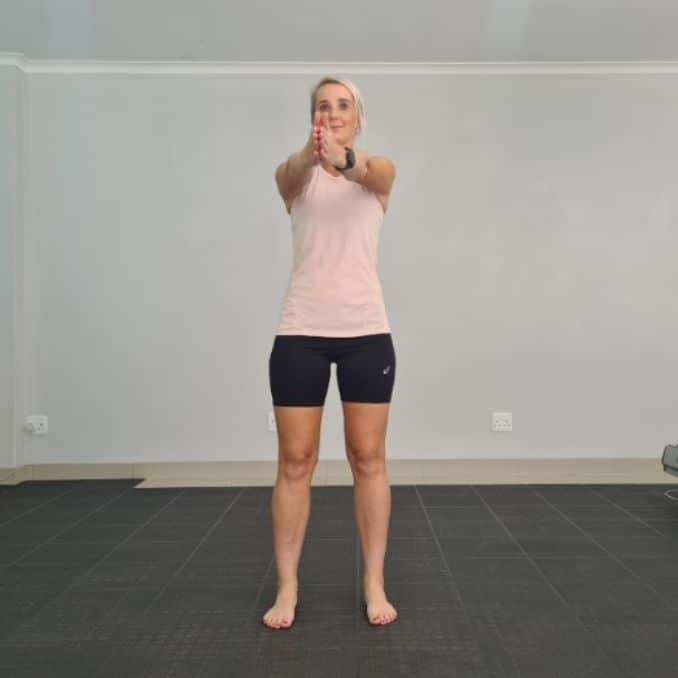 |
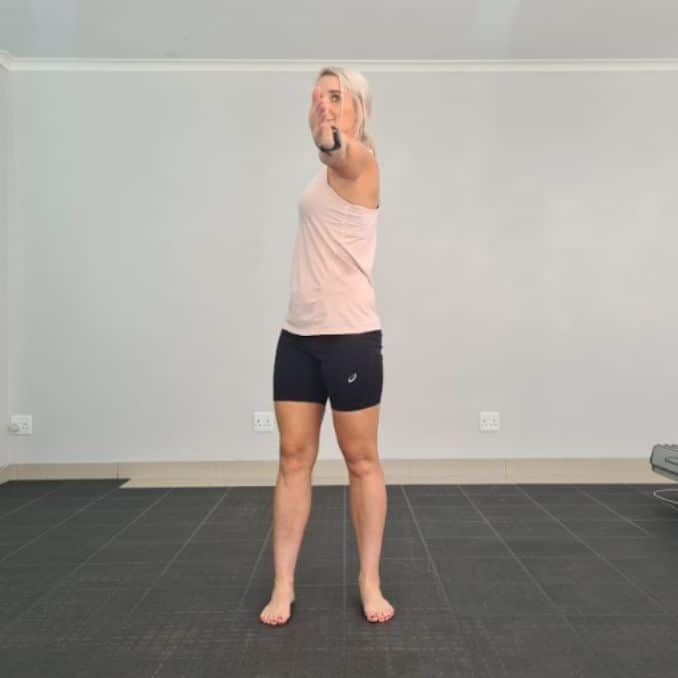 |
Standing Twist
3. Semi-Squats
Begin upright with your feet hip-width apart, maintaining good alignment with your head, shoulders, hips, and legs. Tighten your abdominal muscles. Bend your knees and hinge through your hips to lower your seat into a semi-squat position. Keep your knees behind your toes. Raise back to an upright standing position, squeezing your glutes at the top. Repeat the movement—complete ten repetitions.
 |
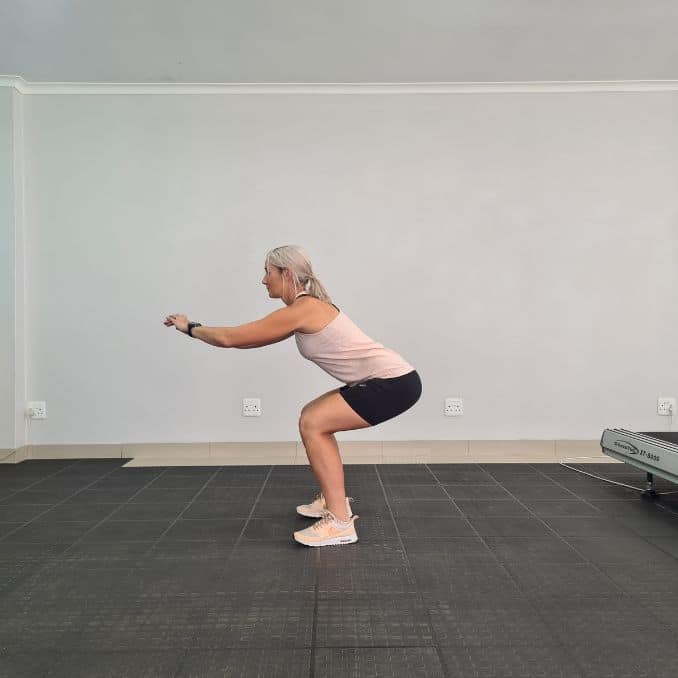 |
Semi-Squats
4. Lateral Lunge
Begin upright with your feet shoulder-width apart, maintaining good alignment with the head, shoulders, and hips. Place your hands on your hips. Take a big step to the side with one foot and bend your top knee to shift your weight, stacking your hip over your knee and ankle. Step back to the starting position and repeat the movement on the opposite side. Start with 1 set of 10 repetitions on each side.
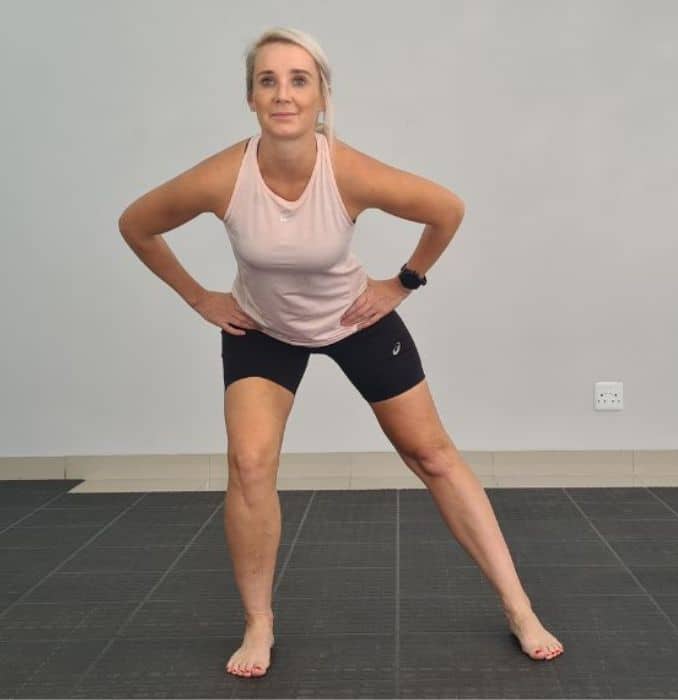 |
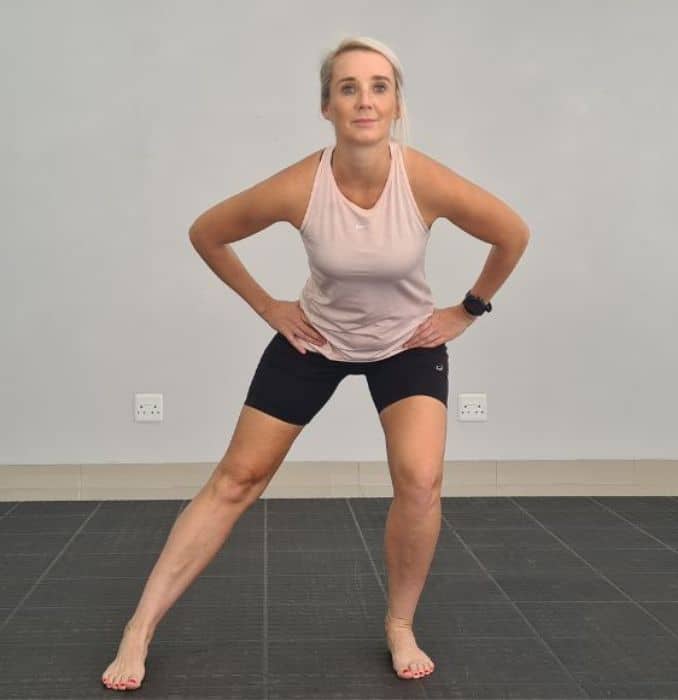 |
Lateral Lunge
5. Kickbacks
Begin upright with your feet hip-width apart, maintaining good alignment with your head, shoulders, hips, and legs. Engage your core and kick each leg backward, bending your knee. Lower your leg down to the starting position. Repeat the movement on the opposite side, alternately repeat the movement with ten repetitions.
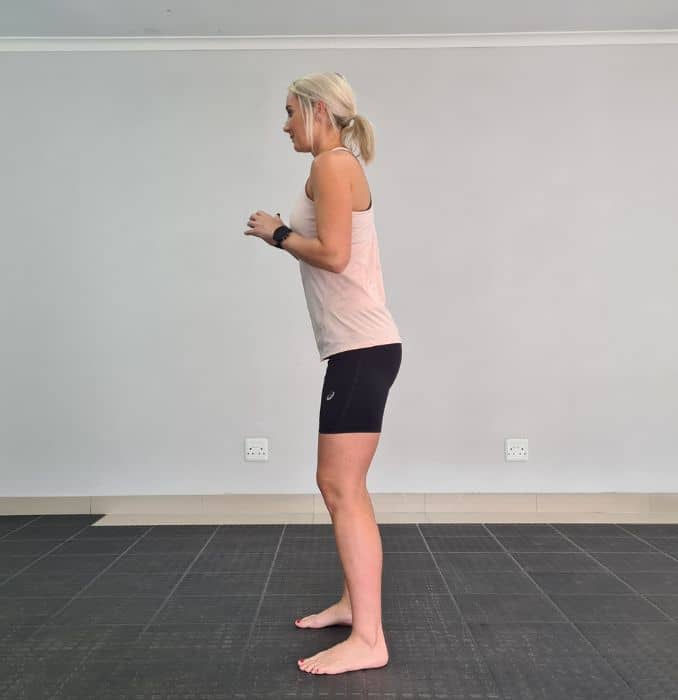 |
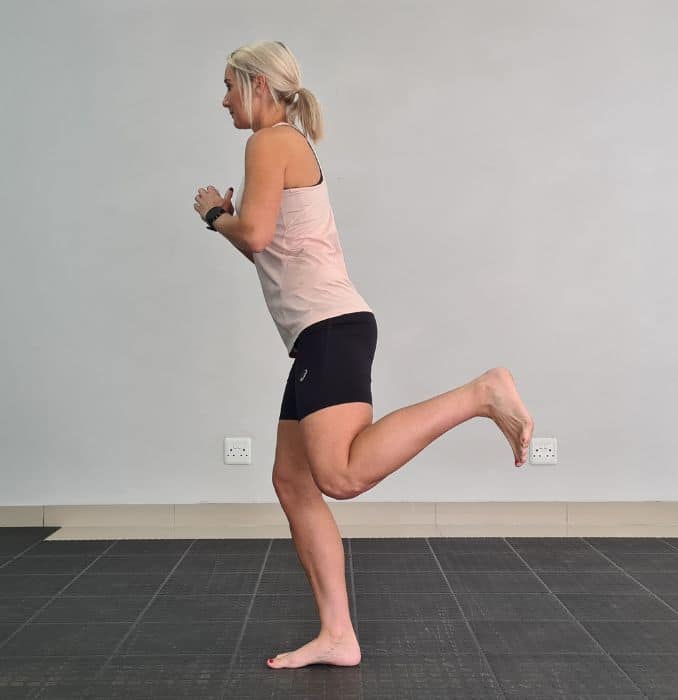 |
Kickbacks
Routines
1. Deadlift with Bicep Curls
For this exercise. You need a slightly heavy dumbbell or a large can of soup.
Begin in an upright standing position with your feet shoulder-width apart, maintaining good alignment with your head, shoulders, hips, and legs. Hold a dumbbell in each hand and place your hands closed on the side with palms facing upward. Contract your abdominal muscles and pivot through your hips to bend your upper body forward. Ideally, your back should be parallel to the floor as you reach your arms down. Raise back up, bending your elbows to the side, with the dumbbell at shoulder length. Repeat the sequence of movements starting with 3 sets of 10 to 15 repetitions.
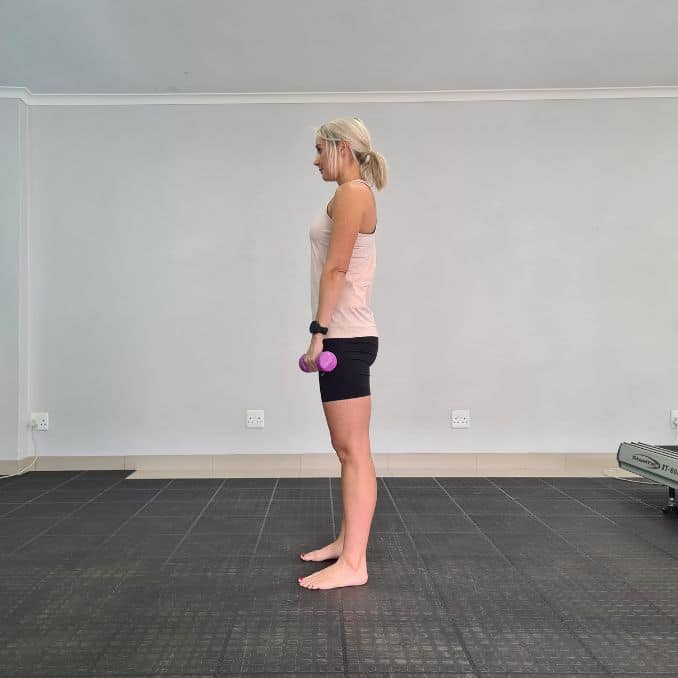 |
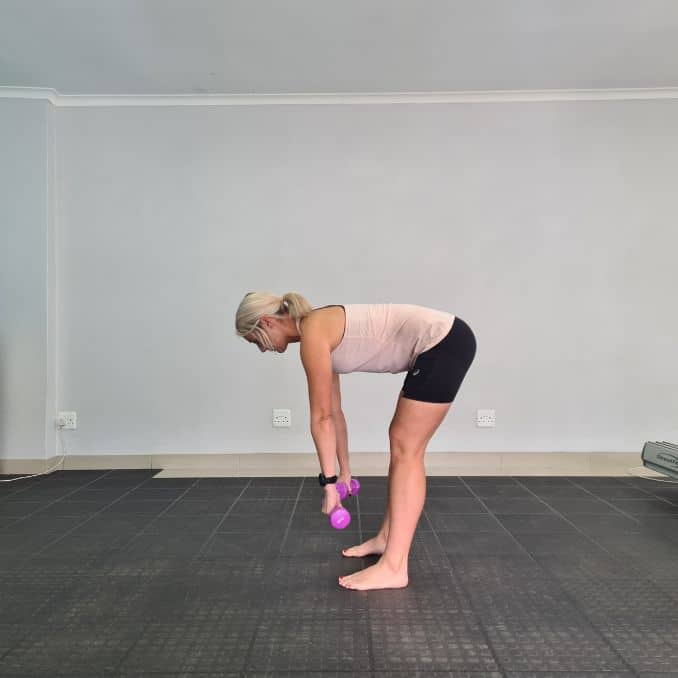 |
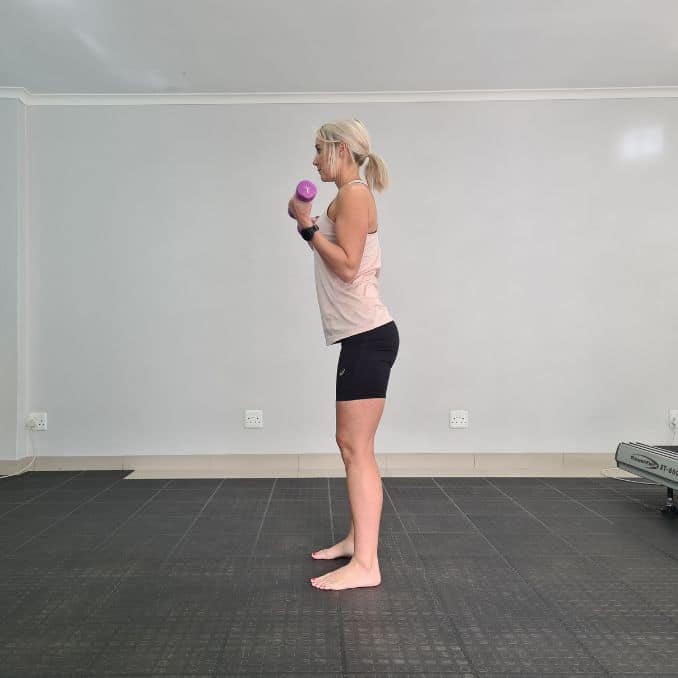 |
Deadlift with Bicep Curls
Advantage
Engages multiple muscle groups simultaneously; the Deadlift targets your glutes, hamstrings, lower back, and core, while the Bicep Curl works your biceps and forearms.
Disadvantage
While deadlifting can help you become stronger, it comes with the risk of injury. One of the more common issues associated with this exercise is a torn bicep.
Tips
Keep your chest lifted and core engaged throughout the entire movement for maximum benefit.
Variation:
Romanian Deadlift
Begin upright with your feet hip-width apart, maintaining good alignment with your head, shoulders, and hips. Hold the dumbbells with an overhand grip, palms facing down, then extend your arms while the weights rest on your thighs. Contract your core, keeping your knees slightly bent, and slowly hinge through your hips to lower the dumbbells towards the floor while keeping your back straight. Lower the weight until you feel a stretch in your hamstrings. This is typically when the barbell or dumbbells reach mid-shin level. Return to the starting position. Repeat the movement.
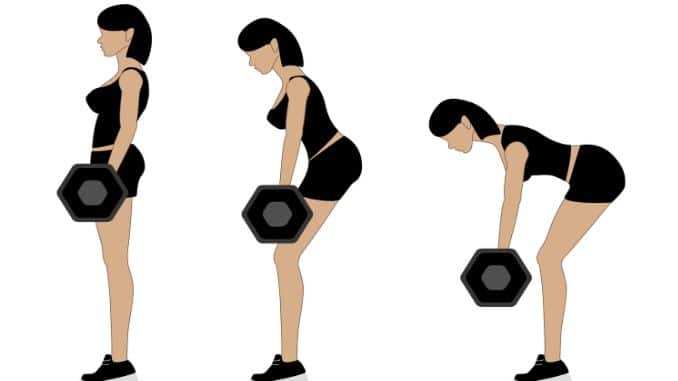
Modification for Beginners
a. Reduce weight
Beginners should start with a lighter weight to master the proper form and technique of the exercise. Gradually, they can increase their weight as they progress.
b. Perform the exercise separately.
Beginners can perform the Deadlift and Bicep Curl exercises separately to learn the correct form and build strength in each exercise before combining them.
c. Use a resistance band.
Resistance bands can be used instead of weights to make the exercise easier and help with balance and stability.
d. Partial range of motion
Beginners can perform a partial range of motion for the Deadlift and Bicep Curl exercises. They can perform the exercises by lifting the weight only to knee height instead of fully standing up.
e. Use a chair or bench.
Beginners can use a chair or bench to perform the Deadlift exercise. This can help with balance and stability and reduce the risk of injury.
f. Start with just Deadlifts.
If the Bicep Curl is too difficult for a beginner, they can start with the Deadlift exercise until they build their strength and technique.
2. Bend-Over Rows
You need a light dumbbell or a can of soup for this exercise. You can also utilize a wall or the back of the chair for balance and support.
Begin upright with your feet hip-width apart, maintaining good alignment with your head, shoulders, hips, and legs. Hold a dumbbell in one hand with your palm facing inward. Engage your core and hinge through your hips to bend your upper body forward. Pull your arm back in a rowing motion, keeping your elbow 30 to 45 degrees away from your body. Return to the starting position and repeat the movement on the opposite side. Repeat the movement on the opposite side, starting with 3 sets of 10 to 15 repetitions on each side.
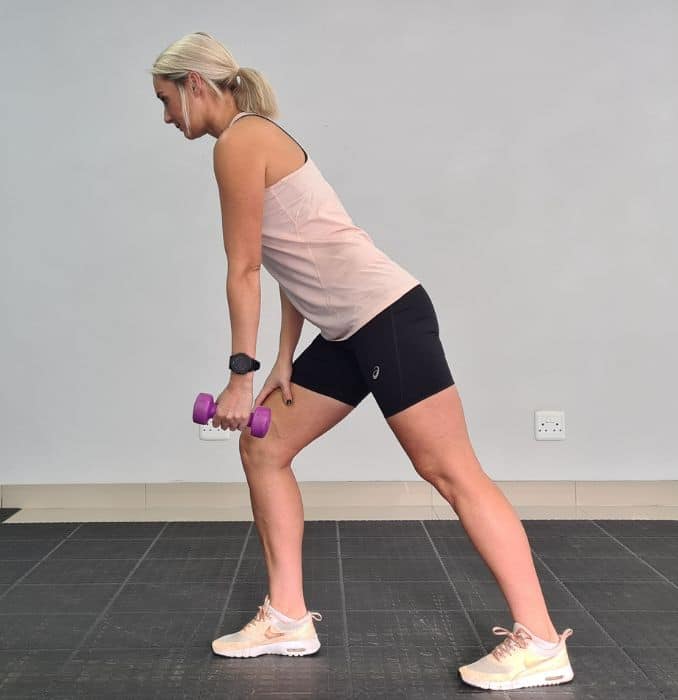 |
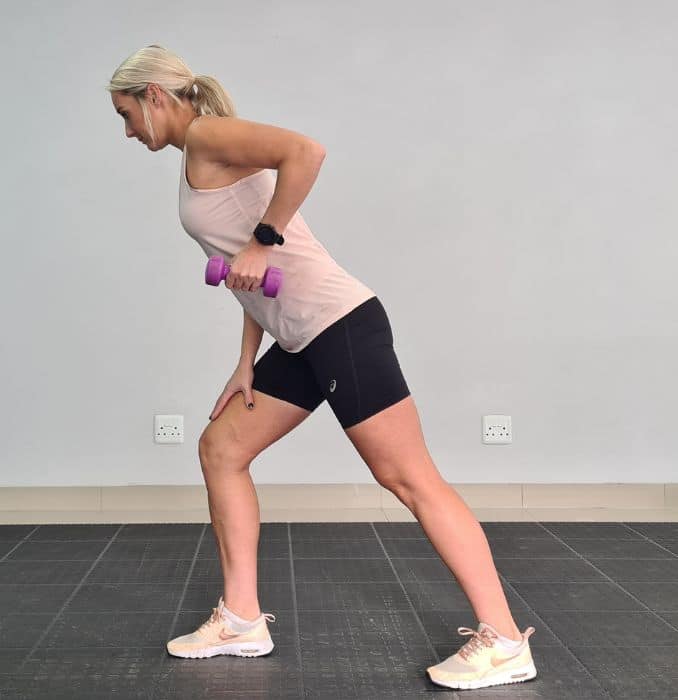 |
Bend Over Rows
Advantage
This exercise helps to strengthen and tone the back, shoulders, and arms. It also helps to improve posture and stability.
Disadvantage
It can put a lot of strain on the lower back, so it is important to maintain proper form throughout the entire movement. Incorrect forms can lead to injury.
Tips
Keep your core engaged and your back flat throughout the entire movement for maximum benefit.
Variation:
Single Arm Dumbbell Row
Begin upright with your feet shoulder-width apart, maintaining good alignment with your head, shoulders, and hips. Prop yourself on a flat bench, hold a dumbbell in one hand with an overhand grip, and contract your core. Hinge through your hips, keeping your back straight, so your body is parallel to the floor. Extend your arm towards the ground, keeping your elbow close to your body. Pull the dumbbell towards your ribcage, squeezing your shoulder blades at the movement's top. Lower the dumbbell to return to the starting position. Relax and repeat the movement on the opposite side.
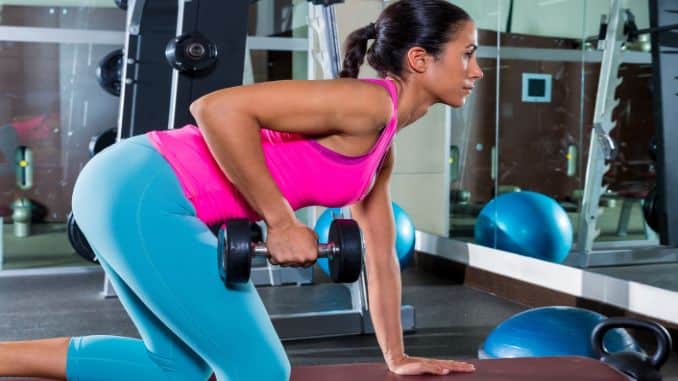
Modification for Beginners
a. Standing cable rows
These are an excellent alternative to bent-over rows as they help beginners develop their back muscles in a more controlled manner.
b. Inverted rows
These routines are a great way to develop back strength and are easier to perform than bent-over rows. This exercise can be done using a suspension trainer, a bar, or a Smith machine.
c. Seated cable rows
Another variation of cable rows that are easier to perform than bent-over rows. This exercise can be done by sitting on a bench or a stability ball, which provides better support and stability.
d. Dumbbell rows
These routines are a great way to work the back muscles and are easier to perform than bent-over rows. This exercise can be done by supporting one hand on a bench, chair, or any other sturdy surface while rowing with the other hand.
e. Barbell rows with a lighter weight
If you still want to perform bent-over rows, try using a lighter weight that is easier to handle. This will help you to focus on your form and gradually build strength in your back muscles.
3. Shoulder Press with Tricep Extension
You need a light dumbbell or a can of soup for this exercise.
Begin upright with your feet hip-width apart, maintaining good alignment with your head, shoulders, hips, and legs. Hold a dumbbell in each hand at shoulder height with your palms facing upward. Engage your core, bend your elbows to the side, and press your arms overhead. Then, hinge your hips and slightly bend your upper body in front, bringing your arms down at shoulder height, then stretching your arms backward. Pull back up, returning to the starting position. Repeat the sequence of movements starting with 3 sets of 10 to 15 repetitions.
 |
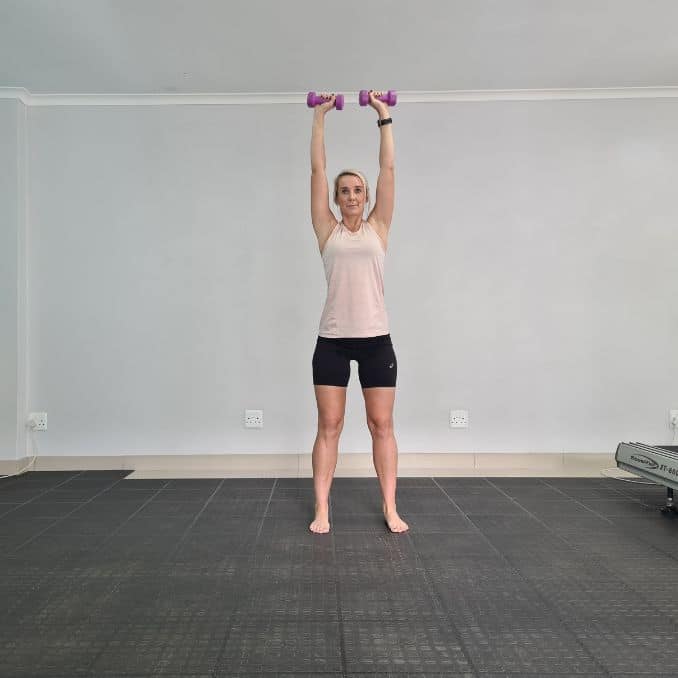 |
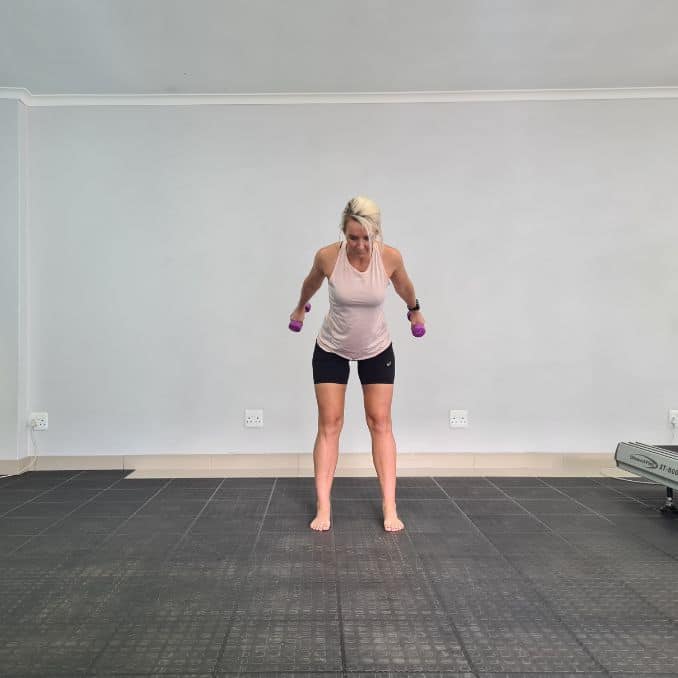 |
Shoulder Press with Tricep Extension
Advantage
Improved strength. This exercise can help you build triceps muscle mass. It's different from other triceps exercises because it engages all heads of the triceps, including posture and stability.
Disadvantage
It can put a lot of strain on the shoulders, so it is important to maintain correct form throughout the entire movement. Incorrect forms can lead to injury.
Tips
Be sure to keep your core engaged and your back straight throughout the entire movement for maximum benefit.
Variation:
Front Raise with Shoulder Press and Tricep Extension
Begin upright with your feet hip-width apart, maintaining good alignment with your head, shoulders, and hips. Hold a dumbbell in both hands and contract your core. Lift the weights up to shoulder level with your palms facing down, then lift the weights up and in front of you until your arms are fully extended overhead. Lower the weights down, back to your shoulders, and then extend your elbows to perform a tricep extension. Relax and return to the starting position. Repeat the movement for 10-12 reps.
This upper-body exercise can be done without weights.

Modification for Beginners
Start by standing with your feet shoulder-width apart. Hold a dumbbell in each hand at shoulder height, with your palms facing forward. Begin by pressing the dumbbells straight up above your head, fully extending your arms. Once you've reached the movement's top, slowly lower the dumbbells back down to shoulder height. Next, bend your elbows and lower the dumbbells behind your head, keeping your elbows close to your ears. Hold this position for a few deep belly breaths, in through your nose and out through your nose. Repeat the movement for the desired number of reps.
4. Squats
You need a light dumbbell or a can of soup for this exercise.
Begin in an upright standing position with your feet wider than shoulder-width apart, maintaining good alignment with your head, shoulders, and hips. Squeeze a dumbbell with both hands at chest- height. Tighten your abdominal muscles. Bend your knees and hinge through your hips to move into a squat position, keeping your knees behind your toes. Raise back to an upright standing position, squeezing your glutes at the top. Repeat the movement starting with 3 sets of 10 to 15 repetitions.
 |
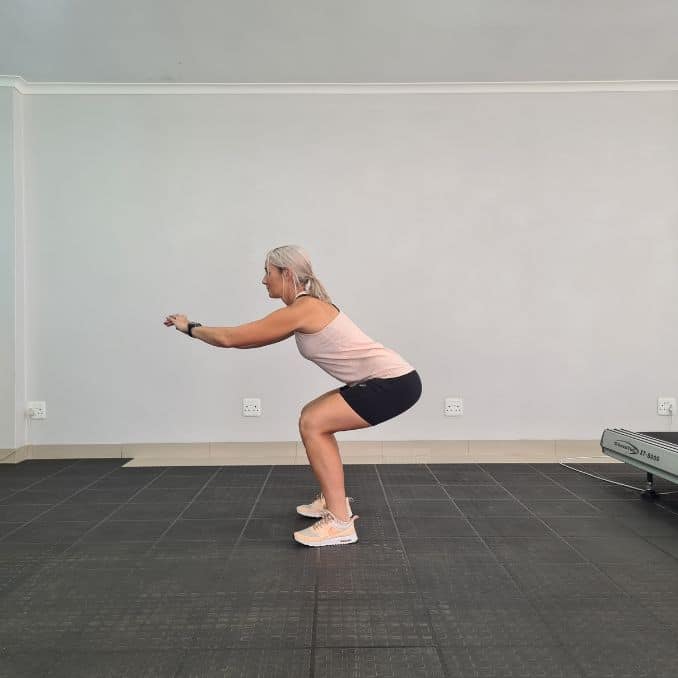 |
Squats
Advantage
- Strengthening the leg muscles, including the quadriceps, calves, and hamstrings.
- reinforcing the knee
- burning fat and helping with weight reduction
- enhancing the lower back
- enhancing suppleness in the lower body
Disadvantage
When you add weight to your squats, the potential for injury to your knees or lower back increases significantly. If you don't squat correctly, you could be in danger of knee discomfort.
Tips
- Always use proper form and technique when performing a squat.
- Keep your chest up and your back straight throughout the exercise.
- Don't let your knees go past your toes when you squat, as this can cause injury to the knee joint.
- If you are using weight, start with a lightweight and increase it gradually as you get stronger.
- Take breaks in between sets to avoid overworking your muscles.
Variation:
Front Raise with Shoulder Press and Tricep Extension
Begin upright with your feet hip-width apart, maintaining good alignment with your head, shoulders, and hips. Hold a dumbbell in both hands and contract your core. Lift the weights up to shoulder level with your palms facing down, then lift the weights up and in front of you until your arms are fully extended overhead. Lower the weights down, back to your shoulders, and then extend your elbows to perform a tricep extension. Relax and return to the starting position. Repeat the movement for 10-12 reps.
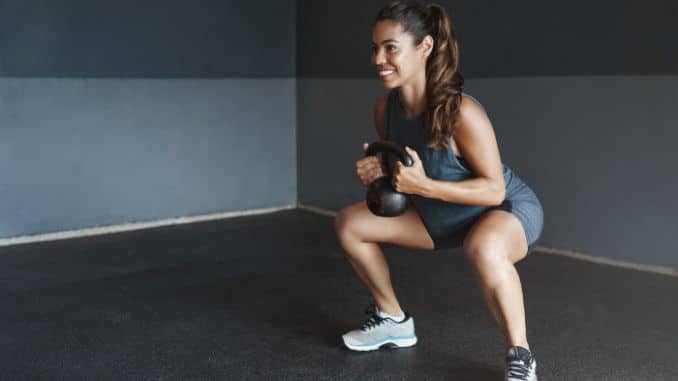
Modification for Beginners
If you are a beginner, starting with a bodyweight squat is best.
To do this, stand with your feet slightly wider than hip-width apart and your toes pointing slightly outward. Slowly lower your body into a squat position while keeping your back straight and core engaged. Go as low as possible without causing discomfort in your knees or lower back. Hold the position for a few seconds before returning to the starting position. Repeat this movement 10-15 times for 3 sets.
5. Chest Press
You need a light dumbbell or a can of soup for this exercise.
Lie on your back with your knees bent and feet flat on the floor. Hold a dumbbell in each hand. Bend your elbows to the side at shoulder level. Engage your core and press both arms upward over the chest. Slowly lower your arms, returning to the starting position. Repeat the movement starting with 3 sets of 10 to 15 repetitions.
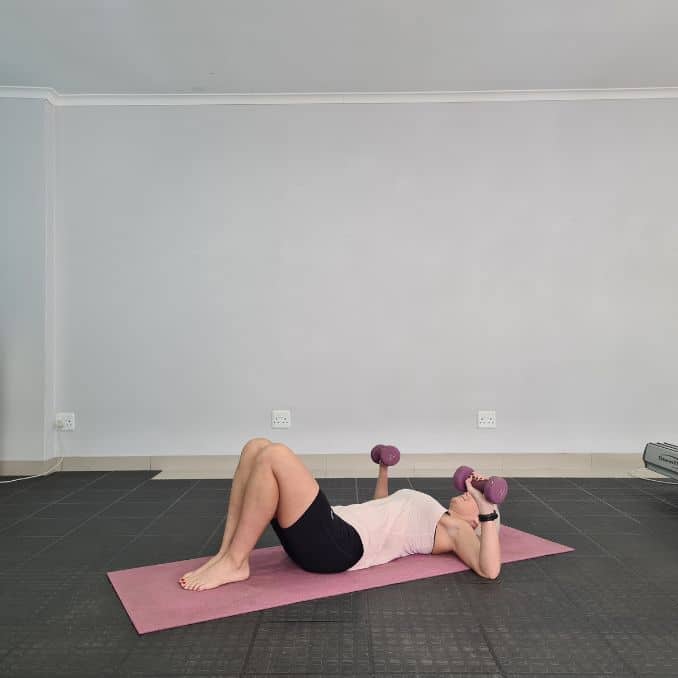 |
 |
Chest Press
Advantage
It helps to improve overall upper body stability and posture. Strong torso muscles can make everyday tasks such as pushing, pulling, and lifting heavy things much easier.
Disadvantage
This exercise can be challenging for beginners.
If done incorrectly, the chest press exercise can be hard on your shoulder joint. Make sure you keep your elbows close to your body and that the motion is controlled.
Tips
- Maintain a neutral spine position throughout the exercise to reduce the risk of injury.
- Ensure you keep your elbows at shoulder level throughout the movement.
- Take a break between sets to allow your muscles to recover properly before continuing with the next set.
- Using the correct form and not overworking your muscles is important. Also, it is important to start with a lightweight and increase gradually as you get stronger.
Variation:
Incline Chest Press
Prop yourself on an incline bench to an angle of around 30 – 45 degrees. Lie on the bench with your feet flat on the floor and Hold a dumbbell in each hand at shoulder height; elbows are 45-degree angles to your chest with your palms facing away from you. Contract your core, then push the weights until your arms are fully extended. Slowly lower the dumbbells to return to the starting position. Repeat the movement
Remember:
1. Avoid dropping the dumbbells while lying on the incline bench. Dropping the dumbbells can cause injury.
2. The bigger the angle, the more the exercise will engage the shoulders.
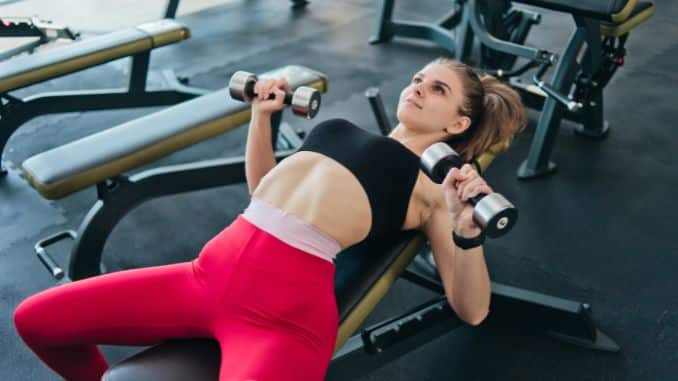
Modification for Beginners
If you are a beginner and are not yet comfortable using dumbbells, you can modify the chest press exercise without weight.
You don't have to buy costly gym equipment for a great upper body! With a committed bodyweight exercise program, you can soon have a super-toned physique, a great chest, and a wide back, all from your home.
6. Crunches
Lie on your back on the floor with your knees bent and your feet flat on the floor, relaxing your upper body and interlacing your fingers at the back of your head. Contract your abdominal area. Engage your core and gently lean your head back, lower your head down, and return to the starting position. Repeat the movement with 10 to 15 repetitions.
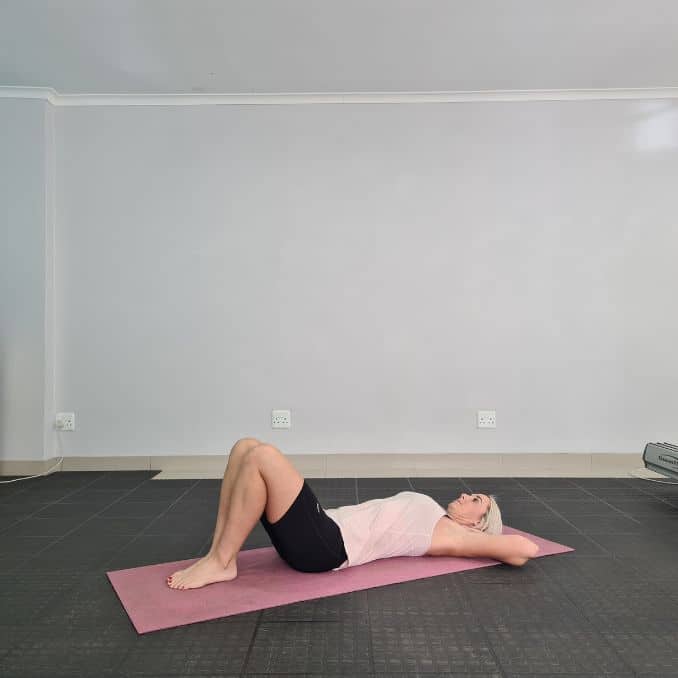 |
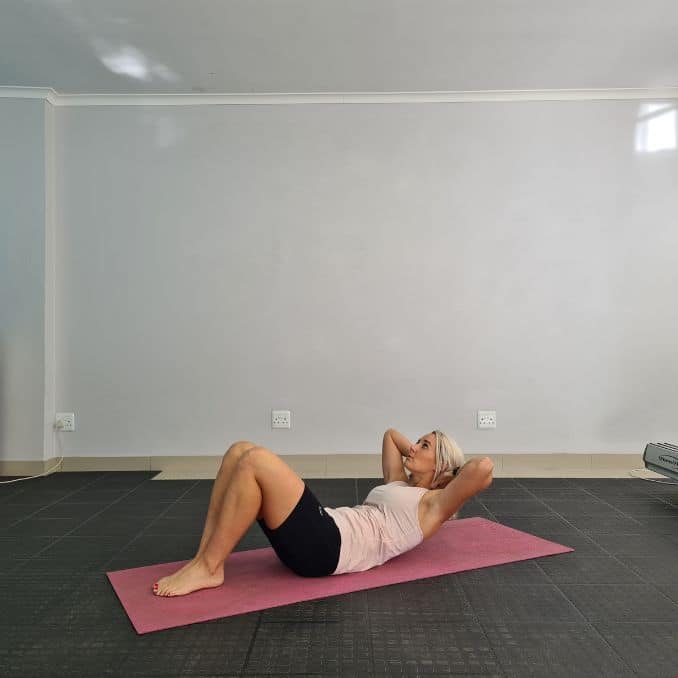 |
Crunches
Advantage
It can help improve your overall posture and strengthen your core for other more complex exercises. Even a few crunches daily can make a huge difference to your fitness routine.
Disadvantage
Crunches can be hard on the neck if not done correctly, so keep your chin tucked in throughout the exercise.
Tips
- Make sure to keep your chin tucked in throughout the exercise.
- Keep your back flat against the floor and focus on using your abs to lift your shoulders off the ground.
- Avoid jerking motions that can injure your back or neck muscles.
- If you are a beginner, start with fewer repetitions and increase as you become stronger and more comfortable with the exercise.
Variation:
Bicycle Crunches
Lie on your back on the floor with your hands behind your head, maintaining good alignment with your head, shoulders, and hips. Engage your core, lift your shoulders off the ground, and bring your right elbow towards your left knee while straightening your right leg. Switch sides and bring your left elbow towards your right knee while straightening your left leg. Repeat these alternating sides in a bicycle pedaling motion.
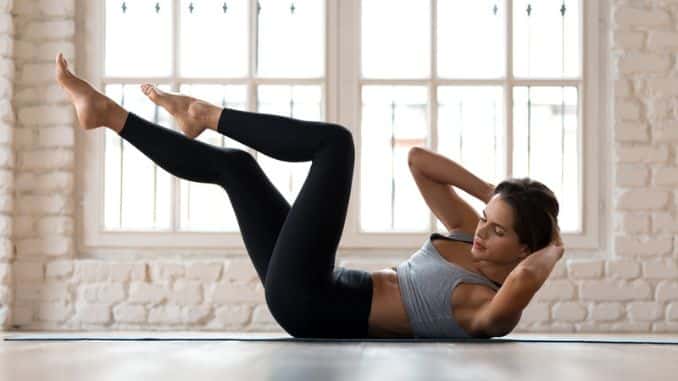
Modification for Beginners
Lie on your back with your feet planted on the floor and with your shoulders hip-width apart. Slowly bend your knees and place your arms across your chest. Contract your core and inhale. On your exhale, lift your upper body while keeping your head and neck relaxed. On your next, inhale, return to the starting position.
Cool Downs
1. Stretches
a. Side Stretch
Begin in an upright kneeling position with your knees and feet close together, maintaining good alignment with your head, shoulders, and hips. Shift your hips back to rest your seat on your feet. Stretch your hands upward. Engage your core and bend your upper body to the side. Hold the position for several deep belly breaths, in through your nose and out through your mouth. Return to the starting position and repeat the movement on the opposite side.
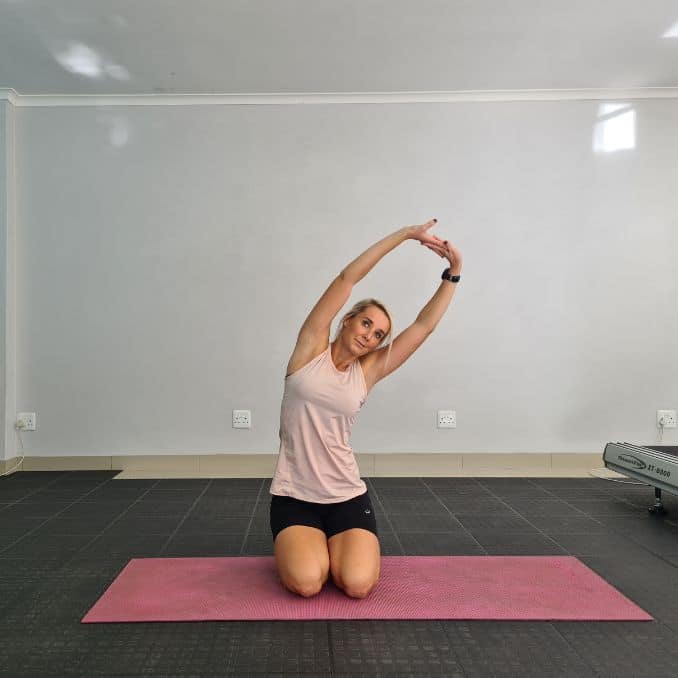
Side Stretch
b. Back Stretch
Begin in an upright kneeling position with your knees and feet close together, maintaining good alignment with your head, shoulders, and hips. Shift your hips back to rest your seat on your feet. Interlace your fingers together and stretch your arms in front at chest height. Engage your core and round your mid-back area. Hold the position for several deep belly breaths, in through your nose and out through your mouth. Relax and return to an upright kneeling position.
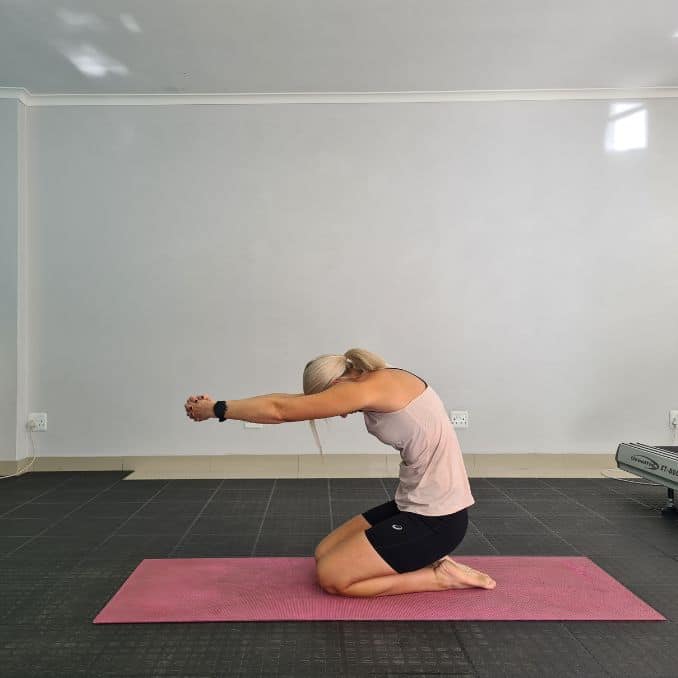
Back Stretch
c. Chest Stretch
Begin in an upright kneeling position with your knees and feet close together, maintaining good alignment with your head, shoulders, and hips. Shift your hips back to rest your seat on your feet. Place your hands at the back of your hips. Engage your core and slightly arch your mid-back area. Hold the position for several deep belly breaths, in through your nose and out through your mouth. Relax and return to an upright kneeling position.
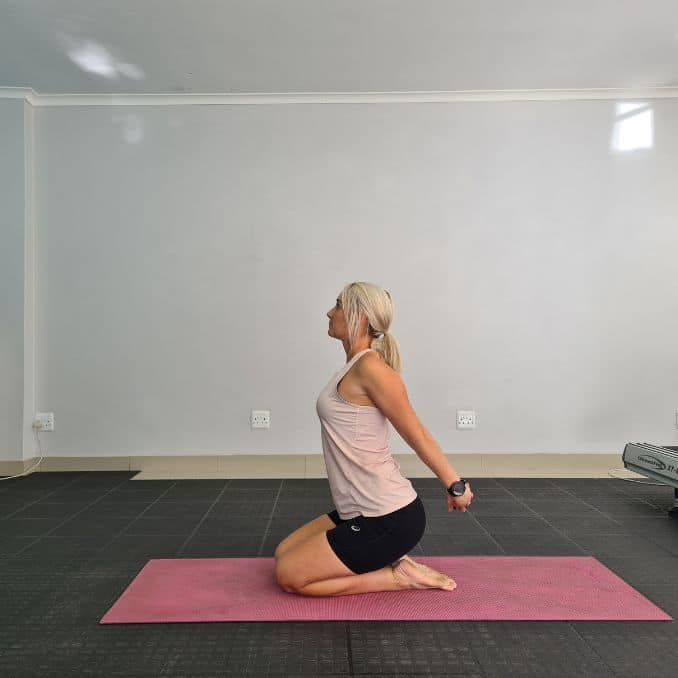
Chest Stretch
2. Cat-Cow
Begin in a 4-point position with your hands beneath your shoulders and your knees under your hips. Contract your abdominal area. Slowly round your mid back as you lower your head downward. Then, alternate by lifting your head and arching your mid-back. Repeat the sequence of movements. Complete five repetitions.
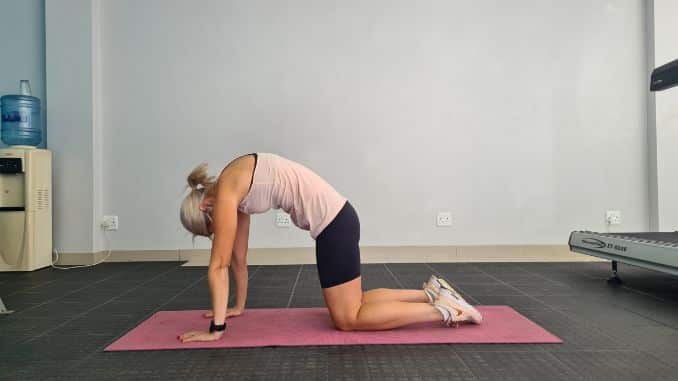 |
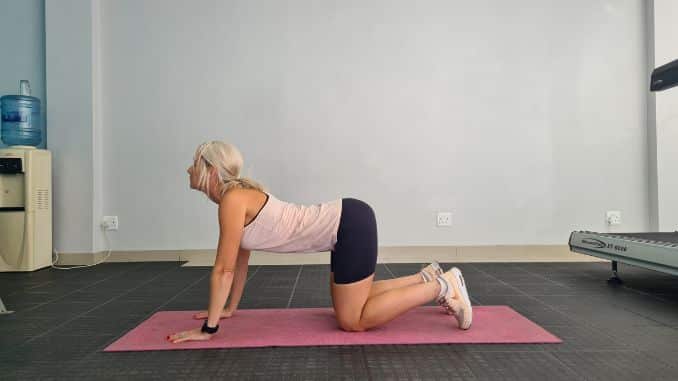 |
Cat-Cow
Conclusion
Everyone has different exercise goals. Some people want to get in shape, while others want to improve their athletic performance. Many people are intimidated by the idea of working out. They think they need to join a gym and spend hours working out their muscles. But you can still get in shape and be active. It takes a little bit of imagination. For instance, hundreds of free and low-cost ways to get in shape exist. They range from walking to cycling to pulling weights. The key is finding the proper exercise routine that fits your schedule and fitness level while challenging enough to make you sweat.
When it comes to simple full-body workouts, variety is vital. Try different exercises and follow other routines until you find the best ones. You will know if you have found the appropriate activities when you start feeling energized and motivated by the end of your workout.
Working out at home can be simple and requires inexpensive equipment. Following these six simple full-body workouts, you can improve your fitness and achieve your goals from home.
The good thing is most of these simple full-body workouts can also be full-bodyweight exercises.

